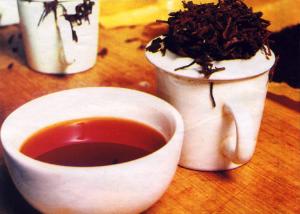
Tea is a beverage that pumps life into millions of Indians so that they can go about their mundane feeling fresh and buoyed up. As a tea consumer, have you ever thought of delving into the numerous varieties of tea that exist or do you even have the slightest knowledge of what tea you consume?
Do you want to know about this highly revered beverage? Then try chatting up with a tea-taster. The so-called tea-tasters have in depth knowledge of all the aspects of tea you would want to know. The variety of tea that exist, the varieties that are popular, those that are dear, the archetypal methods of preparation of a particular tea type and many other characteristics of tea that you were never even aware of can be explained in detail to you by a person who is engaged in the intriguing work of tea tasting.
The skill of tea tasting is acquired through experience as well as training and needs to sharpen with each passing year. A remarkable palate memory is of prime importance for this art of tea tasting, as the different varieties have to be compared and distinguished from each other. A vast amount of knowledge regarding all aspects of tea is a prerequisite for tea tasting.
So, how does the procedure of tea tasting begin? For tea tasting, the tea to be scrutinized is first brewed by putting about 2.5 grams of the tea leaves in boiling water for approximately 6 minutes. Following this, the infused leaves and the liquid are separated from each other and presented in white porcelain pots and cups to the tea taster for analysis. In addition, the dry leaves are also presented separately to the taster for the study.
The examination of tea leaves begins with the analysis of dried tea leaves. A black tea with an even black coloring and accompanied by shiny appearance is considered good. In addition, the presence of golden tips from buds is also considered important and the more they are the better it is. Apart from color the texture and form of the leaves is also studied. The texture should be crisp, dry, and not spongy as this is very crucial to the shelf life of the tea. A heavy, twisted tea leaf is sought-after while a flaky leaf is not ideal for a good tea.
Following the examination of dried leaves, the infused leaves are checked for brilliance and evenness of color. The aroma also is studied by sniffing the infusion.
The next in line for inspection is the liquid in porcelain cup. The first attribute that is scrutinized is the color. How golden and how bright the color is, judges the expert tea taster. Now comes the part where the tea taster will make use of his sense of taste. The tea taster sips a small amount of the liquid with a teaspoon. He holds it into his mouth for a few seconds, rolling the liquid in his mouth in the process and finally spits it out. The liquid is judged for traits of strength and briskness i.e. thickness and pungency respectively. The aroma is also judged at this stage.
You will be stunned to know that by this examination the skilled tea taster can even tell you where exactly the tea is grown and which months of the year the tea leaves were plucked. This is the reason why a veteran tea-taster’s opinion goes a long way in deciding the quality and value of tea. Therefore, without a doubt it can be said that tea tasting is indeed an outstanding art.
Via: Indiateaorg, Darjeelingnews



